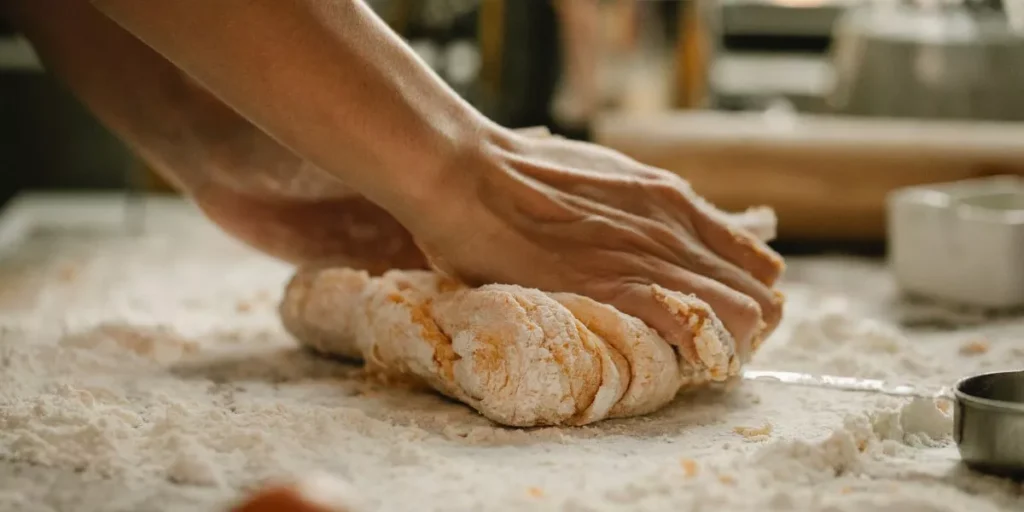
To achieve flawless dough for any recipe, it’s crucial to grasp the precise balance of ingredients and techniques. From the selection of flour to the method of mixing, each step plays a pivotal role in the final outcome. But what truly sets apart a mediocre dough from a stellar one lies in the art of resting and proofing. These often-overlooked stages can elevate your baked goods to a whole new level of perfection. Want to uncover the secrets behind these transformative processes?
Essential Ingredients for Perfect Dough
To create perfect dough, start by gathering the essential ingredients as listed in your recipe. Flour is the foundation of any dough, providing structure and texture. Make sure to use the type of flour specified in your recipe, whether it’s all-purpose, bread flour, or whole wheat flour. Yeast is another crucial ingredient that helps the dough rise. Active dry yeast or instant yeast can be used, depending on your recipe’s requirements.
Water is necessary to hydrate the flour and activate the yeast. Ensure the water is at the correct temperature specified in the recipe, as it can affect how the dough rises. Salt adds flavor to the dough and controls the fermentation process. Be sure to measure the salt accurately to achieve the desired taste.
Additionally, many recipes call for sugar to feed the yeast and add sweetness to the dough. Eggs can also be used to enrich the dough and provide structure. Finally, fats like butter or oil contribute to the dough’s tenderness and flavor. By carefully selecting and measuring these essential ingredients, you can set the foundation for creating the perfect dough for your recipe.
Proper Mixing Techniques for Ideal Dough Consistency
For achieving ideal dough consistency, mastering proper mixing techniques is key to ensuring your dough turns out just right. When mixing dough, start by combining your dry ingredients thoroughly before adding any liquids. This helps distribute the salt, sugar, and leavening agents evenly.
Next, slowly incorporate your liquids into the dry mixture. Be cautious not to overmix, as this can result in a tough dough. Use a gentle folding motion to blend the ingredients until just combined. If your recipe calls for kneading, do so until the dough is smooth and elastic.
Remember, different types of dough require different mixing techniques. For example, a pie crust should be mixed until just combined to maintain a flaky texture, while bread dough benefits from more robust kneading to develop gluten.
The Importance of Resting and Proofing Dough
Resting and proofing dough plays a crucial role in developing flavor and texture in baked goods. When you allow your dough to rest, it gives the gluten strands time to relax, making the dough easier to work with and resulting in a more tender texture. This resting period also allows the flour to fully hydrate, ensuring a more even distribution of moisture throughout the dough, which is essential for a consistent bake.
Proofing, on the other hand, is the final rise that dough undergoes before baking. During proofing, the yeast ferments the sugars in the dough, producing carbon dioxide gas that causes the dough to rise. This process not only helps to develop the desired volume and structure in your baked goods but also enhances the flavor as the yeast creates complex compounds that contribute to a rich taste profile.
Troubleshooting Common Dough Problems
When troubleshooting common dough problems, identifying issues early can prevent baking mishaps and ensure successful results. One common issue you might encounter is dough that doesn’t rise properly. This could be due to expired yeast, water that was too hot and killed the yeast, or not enough kneading to develop the gluten. To fix this, try using fresh yeast, ensuring the water is at the right temperature, and kneading the dough a bit longer.
Another problem you may face is dough that’s too sticky or too dry. If your dough feels sticky, try adding a little flour gradually until it reaches the right consistency. On the other hand, if your dough is too dry and crumbly, gradually incorporate small amounts of water until it comes together smoothly.
Lastly, if your dough ends up tough and dense after baking, you may have overworked it during kneading or rolling. To avoid this, handle the dough gently and avoid excessive kneading to keep it light and airy. By troubleshooting these common dough problems proactively, you can elevate your baking game and achieve perfect dough every time.
Trending Products














